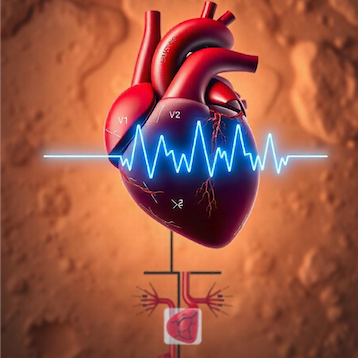The muscle hypothesis of shortness of breath in patients with cachexia

Published: December 30, 2024
Abstract Views: 1078
PDF: 394
HTML: 0
HTML: 0
Publisher's note
All claims expressed in this article are solely those of the authors and do not necessarily represent those of their affiliated organizations, or those of the publisher, the editors and the reviewers. Any product that may be evaluated in this article or claim that may be made by its manufacturer is not guaranteed or endorsed by the publisher.
All claims expressed in this article are solely those of the authors and do not necessarily represent those of their affiliated organizations, or those of the publisher, the editors and the reviewers. Any product that may be evaluated in this article or claim that may be made by its manufacturer is not guaranteed or endorsed by the publisher.
Similar Articles
- Rafael Vidal-Pérez, Ewa A. Jankowska, The scientific targets: the myocardium, the vasculature and the body’s response to heart failure , Global Cardiology: Vol. 2 No. 1 (2024)
- Giuseppe M.C. Rosano, Jerneja Farkas, Evolving targets for heart failure: the journey so far , Global Cardiology: Vol. 1 No. 1 (2023)
- Giuseppe M.C. Rosano, Clinical trial design, endpoints and regulatory considerations in heart failure , Global Cardiology: Vol. 2 No. 1 (2024)
- Stephan von Haehling, Wolfram Doehner, Ruben Evertz, Tania Garfias-Veitl, Monika Diek, Mahir Karakas, Ralf Birkemeyer, Gerasimos Fillippatos, Piotr Ponikowski, Michael Böhm, Tim Friede, Stefan D. Anker, Iron deficiency in heart failure with preserved ejection fraction: rationale and design of the FAIR-HFpEF trial , Global Cardiology: Vol. 1 No. 1 (2023)
- Muhammad Shahzeb Khan, Javed Butler, Laibah Arshad Khan, Markus S. Anker, Advanced cancer as a heart failure like syndrome due to cardiac wasting cardiomyopathy: facts and numbers , Global Cardiology: Vol. 2 No. 4 (2024)
- Muhammad Usman Almani, Jafar Alzubi, Muhammad Yousuf, Razan Alrawashdeh, Noor Fatima, Mohammad Al Madani, Raphael Bonita, Pulmonary artery pressure sensor device performance in patients with atrial fibrillation/flutter , Global Cardiology: Vol. 2 No. 4 (2024)
- Elena Efremova, Alexander Shutov, Adherence to lifestyle therapy in patients with chronic heart failure and comorbidity , Global Cardiology: Vol. 1 No. 1 (2023)
- Adeseye A. Akintunde, Sope T. Orugun, The association of iron deficiency with right ventricular dysfunction in Africans with heart failure , Global Cardiology: Vol. 2 No. 4 (2024)
- Khawaja M. Talha, Javed Butler, Stephan von Haehling, Mitja Lainscak, Piotr Ponikowski, Stefan D. Anker, Defining iron replete status in patients with heart failure treated with intravenous iron , Global Cardiology: Vol. 1 No. 1 (2023)
- Jelena Čelutkienė, Agnė Monika Jakštaitė, Jolita Badarienė, Svetlana Solovjova, Ieva Slivovskaja, Rokas Navickas, Edita Kazėnaitė, Egidija Rinkūnienė, Alma Čypienė, Jonas Misiūra, Ligita Ryliškytė, Aleksandras Laucevičius, Andrew J.S. Coats, Detection of early heart failure with preserved ejection fraction in metabolic syndrome patients detected as part of a national screening program in middle aged subjects , Global Cardiology: Vol. 1 No. 1 (2023)
You may also start an advanced similarity search for this article.

 https://doi.org/10.4081/cardio.2024.57
https://doi.org/10.4081/cardio.2024.57
















